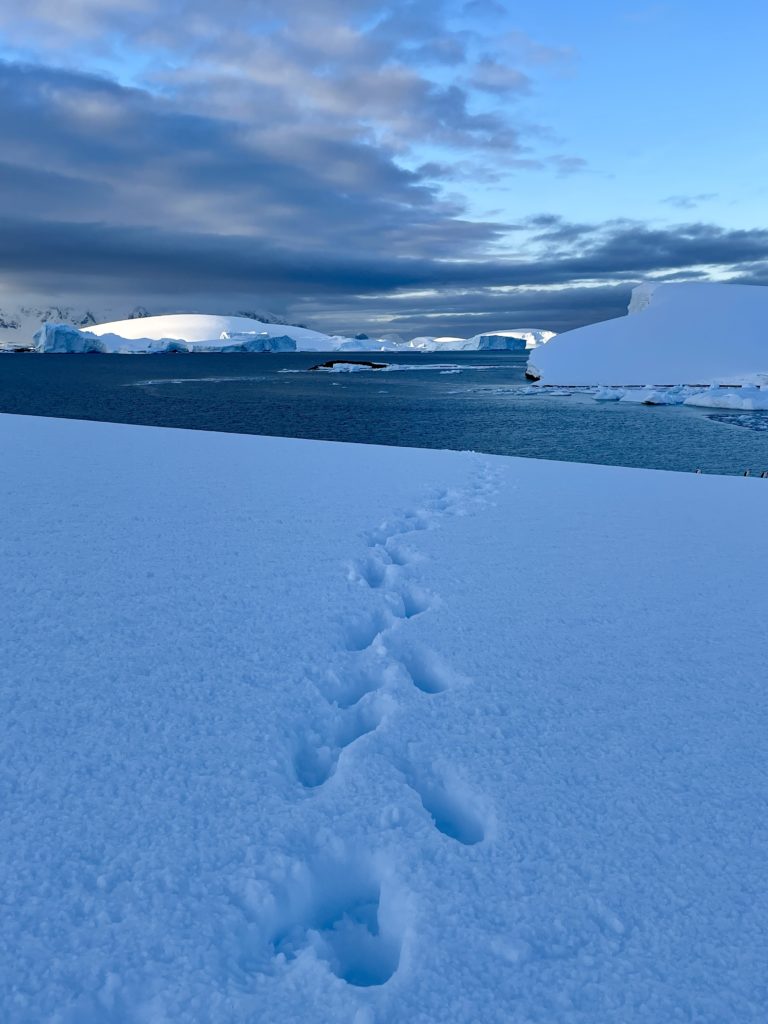
I stood in the early morning light as it cast a bluish shadow across the pure white snowfield before me. Taking a step into a clean, unspoiled patch, I wondered if my print would remain as a visual impact, or be blown smooth by that afternoon. I listened to the lonely sound of the pancake ice gathering and crunching together while the ever-present and persistent wind whistled and wormed its way among the threads of my thermal layers. Then, my eyes lifted up and out, setting upon an enormous iceberg stationed in the bay below. The light accentuated the blue-green transparency of its edges, the smooth crust of its dense white sides and the ice blue of its depths. This dramatic and dynamic landscape of water, color and ever-changing light was so much more than anything I ever imagined it to be; so much more than my brain could fully comprehend. I pondered the enormous honor and privilege I had at this moment to be able to experience so much beauty in the world. Here I was, standing in a place so wild and so remote, that few humans ever get to go.
I was in Antarctica.
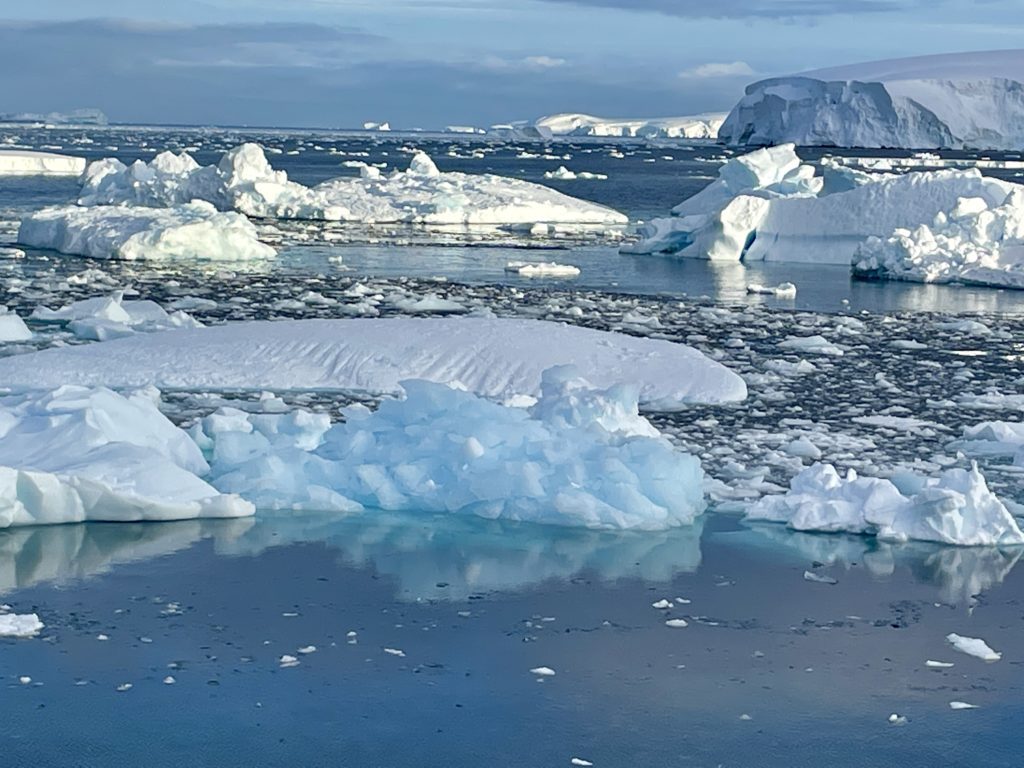



I never expected to be there. My wanderlust itinerary through Patagonia took me to Ushuaia, Argentina (U-shwhy-a) to complete a three week volunteer gig on a nature reserve. I was supposed to be hiking trails and administering visitor surveys every day. But, on Day 4 of my job, I had an unfortunate accident with a mattress and my toe and foot suffered badly. I couldn’t walk for a few days. The director of the reserve told me that if I couldn’t do the job, I couldn’t stay in the free accommodations, so I had to leave. I went to a nearby hostel and rested and wrote, but after three days, boredom set in. I realized that if I had to keep resting, I could just as easily rest on a boat. So, I hobbled off to Wayfinders tourist agency (https://wayfinderadventures.com) and inquired about their advertised “last-minute” Antarctica Cruise fares. As luck would have it, there were some cancellations on a small ship leaving in two days and the bottom-basement price was less than half the normal fare. How often does one get to just go to the Seventh Continent on a whim? So, I jumped at the chance and 24-hours- plus a Covid-test later- I was on a 12-day cruise to Antarctica.












Ushuaia, Argentina is considered “the most southern city in the world”. It is located on the island of Tierra del Fuego, at the very end of the 15,000 mile Pan-American Highway connecting the Americas from northern Alaska, USA to the tip of South America. This city is a hiker’s paradise with so many mountain trails to explore. It is also known for its Antarctica Cruise industry as the Peninsula of Antarctica is only 400 miles away from here. It’s true, the ships at the dock were calling my name.


The MV Ushuaia was built as a NOAA (National Oceanic and Atmospheric Administration) research vessel in 1970 but has since been bought by an Argentinian travel company and converted into a small and simple 90-passenger cruise ship. Throughout the summer tourist season, it travels between the tip of South America to Antarctica for a variety of 10-14 day cruises. When I arrived at the dock, I admit to raising an eyebrow to its stout but dinky appearance compared to the National Geographic Explorer, and the enormous Viking and Quark cruise ships all heading to Antarctica as well. But our little ship proved its power, and our trip was as smooth as one could hope.


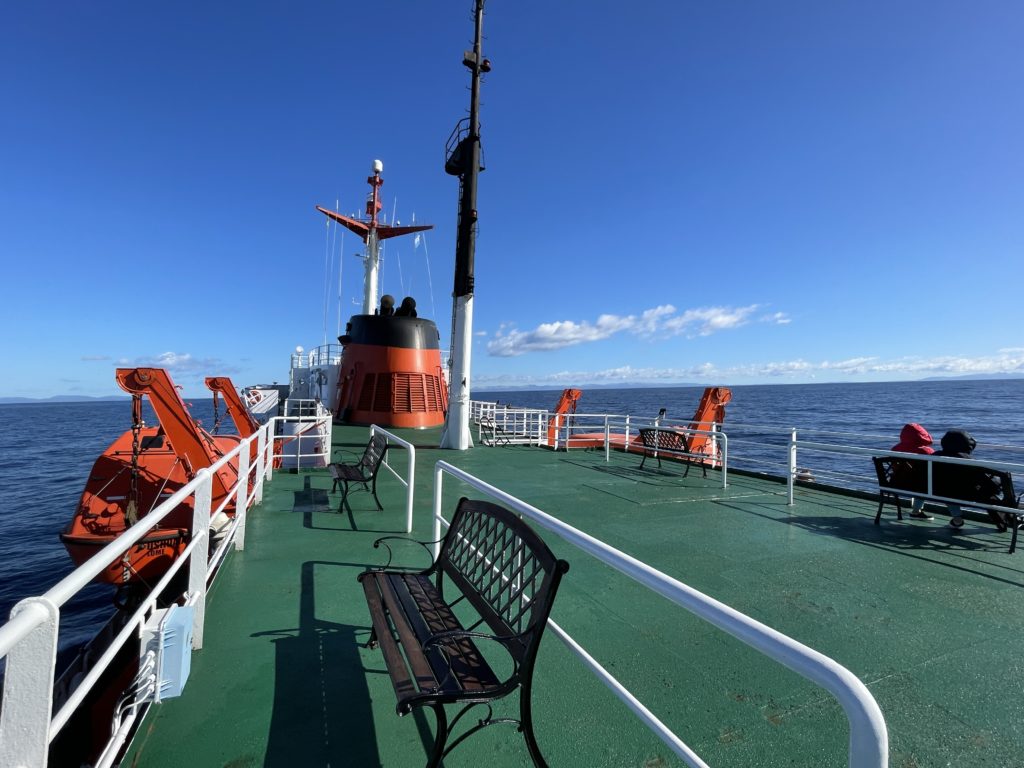



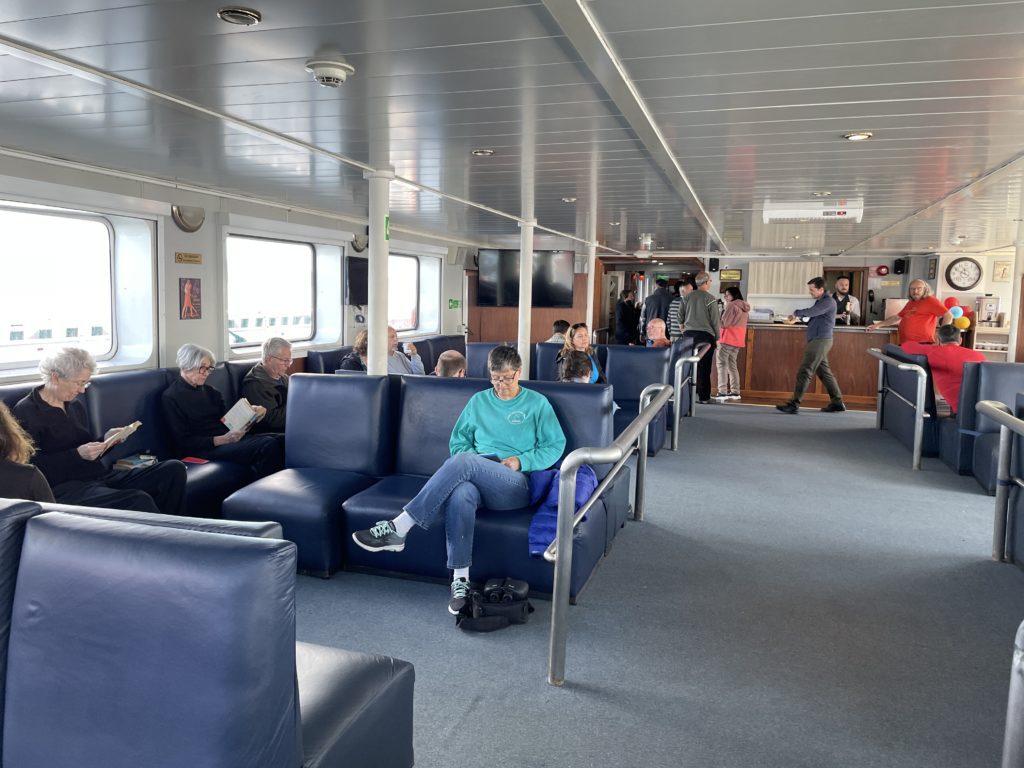



Scenes from the MV Ushuaia


Our 12-day itinerary took us from Ushuaia, through the infamous Beagle Channel, named after the ship which was sailed by Captain Fitzroy and Charles Darwin as they explored the area in 1831. This protected channel connects the Atlantic Ocean to the Pacific Ocean at the tip of South America and enables mariners to avoid sailing further south around the tumultuous waters and winds off of Cape Horn.
Once leaving the protection of land, we spent 40 hours crossing the hellish washing machine of the Drake Passage. This is where the waters and currents of the Pacific, Atlantic and Southern Oceans all converge with high winds constantly whipping around the Antarctica continent. It’s a serious crossing, and in both directions we were so lucky to have blue skies and moderate 35-foot swells. Most of us took sea-sickness pills and dozed through the worst of it.






After that, we cruised through the South Shetland Islands, down the Gerlache Straight and continued south to the Antarctic Circle at 66.3 degrees Latitude South. After celebrating the crossing of the circle, we turned around and basically retraced our path, but one would never know that because the weather and cloud-cover over the mountains was ever changing. Along the way in both directions, we searched the horizon for whales, and we made several zodiac landings onto islands and the mainland of Antarctica. Finally, in the spare minutes between all of that, our tour guides, who were specialists in many different topics, gave us lectures to elevate our understanding of Antarctica.










For each landing, we were dressed in many layers, with a life jacket and rubber boots. When leaving and returning to the ship, we were required to disinfect our boots and the cuffs of our waterproof pants. This was to avoid the spread of invasive seeds and prevent cross-contamination of penguin poop between the colonies. We were also advised to never sit down or set anything on the snow to avoid contamination, and never make a visual mark in the snow other than our footprints.


Antarctica is the only continent with ever-changing borders as ice sheets double its size during the dark winter months and shrink again with the melting of the long, and light summer days. 95% of its mass is covered in ice, which contain 70% of Earth’s freshwater. Yet, with so little rain, Antarctica is considered the largest desert on Earth. It is also the coldest and windiest place on Earth.
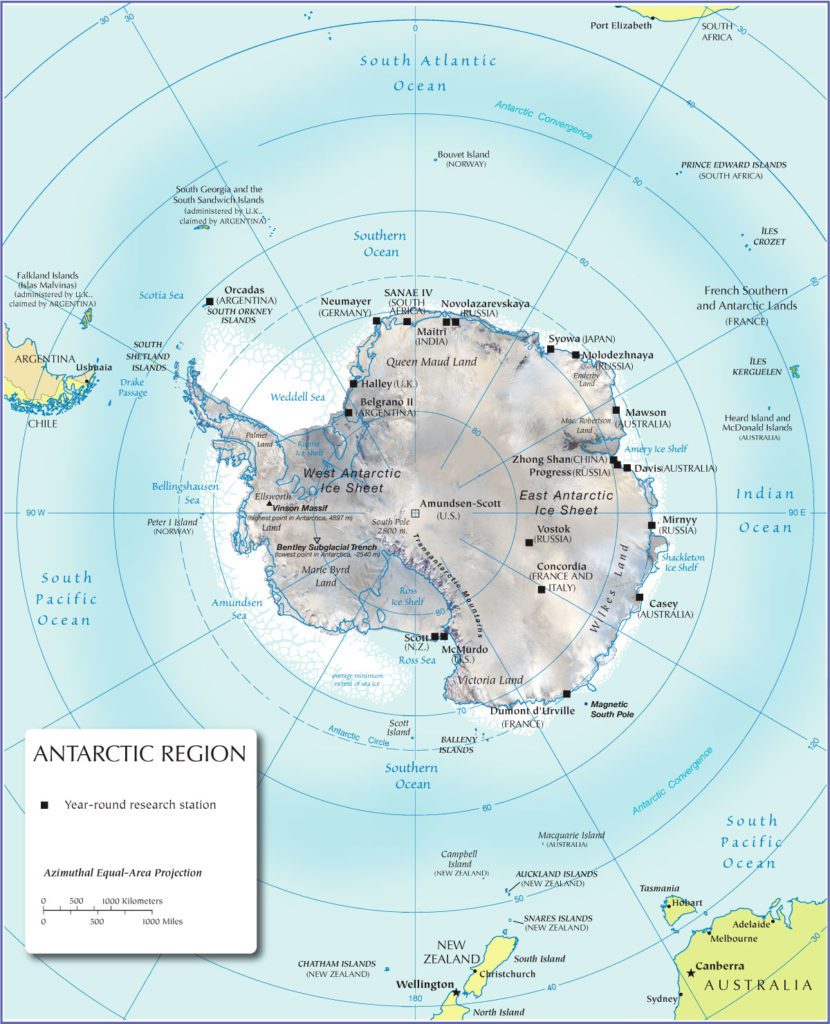

In Antarctica, I expected to see penguins, seals and whales. But really, for me, the light and the ice were the stars of the show. You just can’t imagine the vastness of this wilderness, the seemingly endless white of snow and ice, and the depths of its colors. There are no adequate words to describe it all. But for you, I’m going to try.
In the shadows, you see a variety of grey in the clouds, the grey-blue of the water, and the grey-green of the speckled rocks at the shoreline. Then, with the sun, more colors emerge.
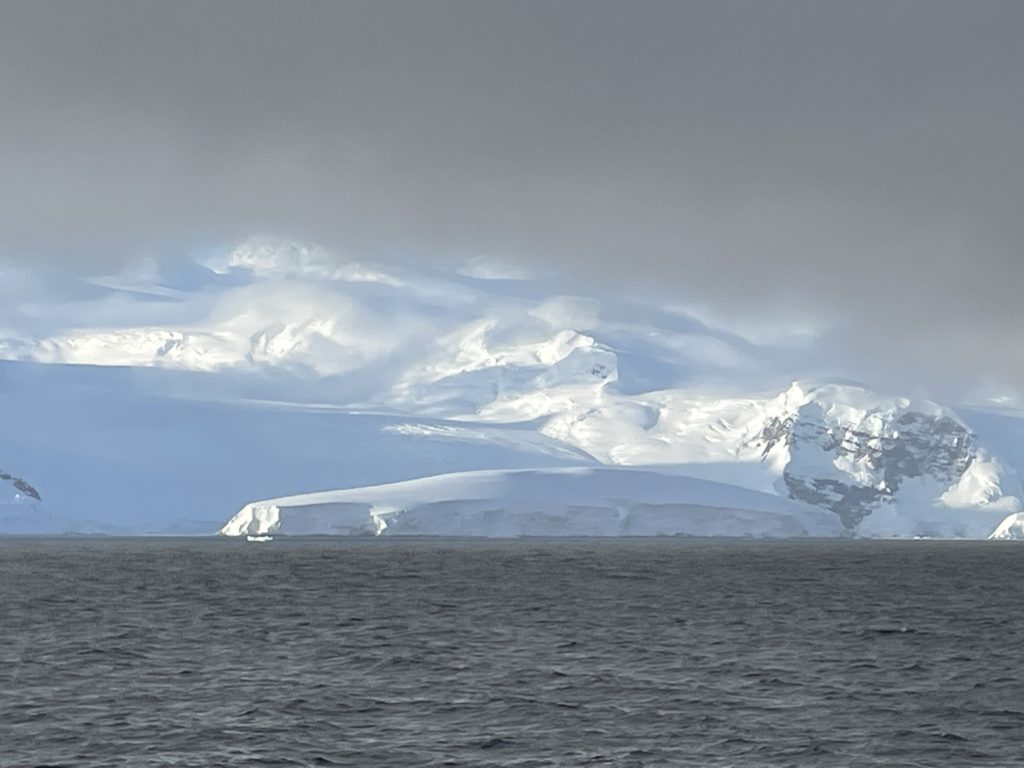

The light filters through the clouds and highlights a snowy peak, then rolls over a pure snow field giving way to blinding whiteness, like frosting, sparkling in the sunshine.
Next, the light touches on an iceberg – some as big as a football stadium – with etherial edges adding to its mystery. Here, blues and whites merge. The crevasses, caves, cracks, and archways revealing all shades of iridescent, sky and grey-blues. The transparent waves cut a baby-blue girdle around its waist.
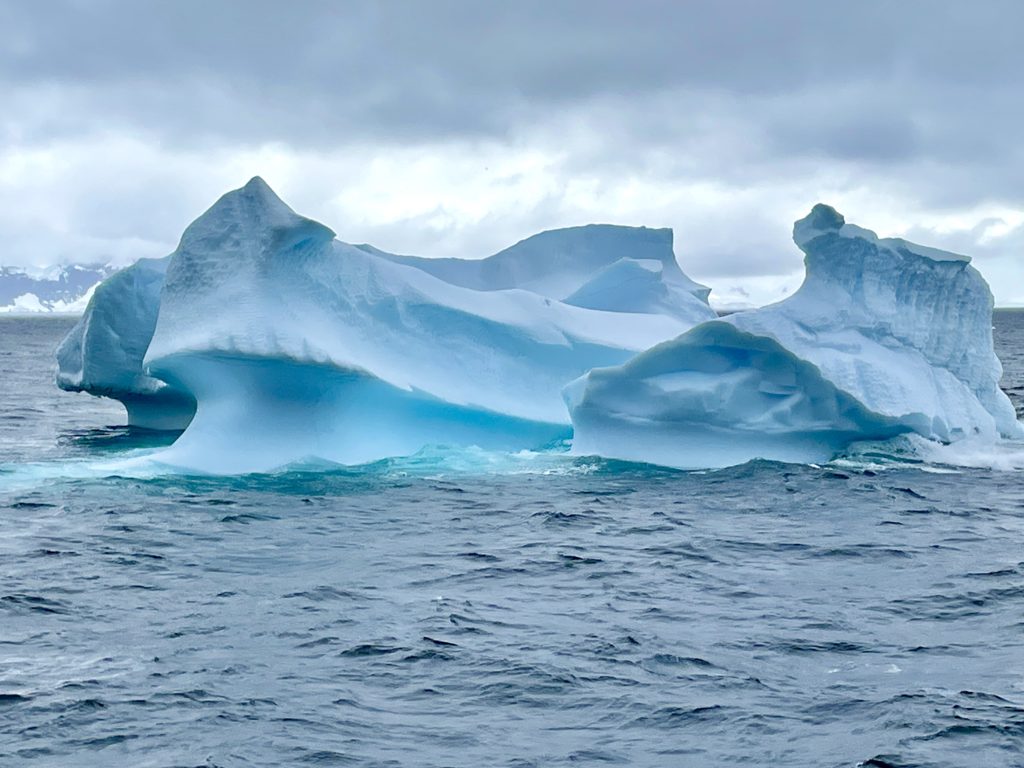

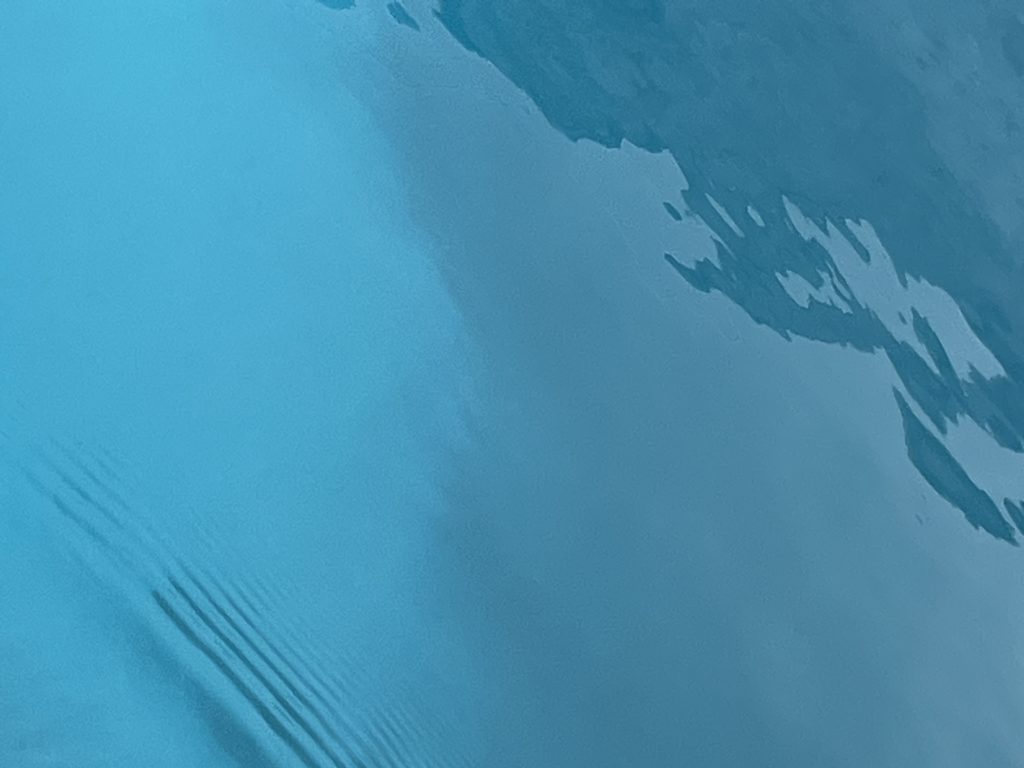

The water lapping around our boat is never black, but varies from a deep marine blue, to a much lighter turquoise or electric blue through the edges of the ice and into the abyss below.
And then the light changes again, and entirely different features emerge from the landscape. Your brain can’t comprehend all that it is seeing; the light plays tricks as what you see one moment fades into the background in the next. It’s so mesmerizing to watch.
I took 2,500 photographs attempting to capture this light. To its credit, my I-Phone 12-Mini did a pretty good job. Luckily, several other passengers came with their long camera lenses and were generous in sharing their close-up photos of the wildlife as well. I am grateful to them all.
But pictures didn’t always do it justice. So, in between our landings, I tried to write, scribbling down descriptions of what I was seeing. I asked my fellow passengers what words they would use to describe Antarctica.
Using their words, and all of our pictures, here is my attempt to honor the continent at the bottom of the Earth, a place where the wind and the water are really the only true artists over time.
Antarctica is…
Vast, Remote




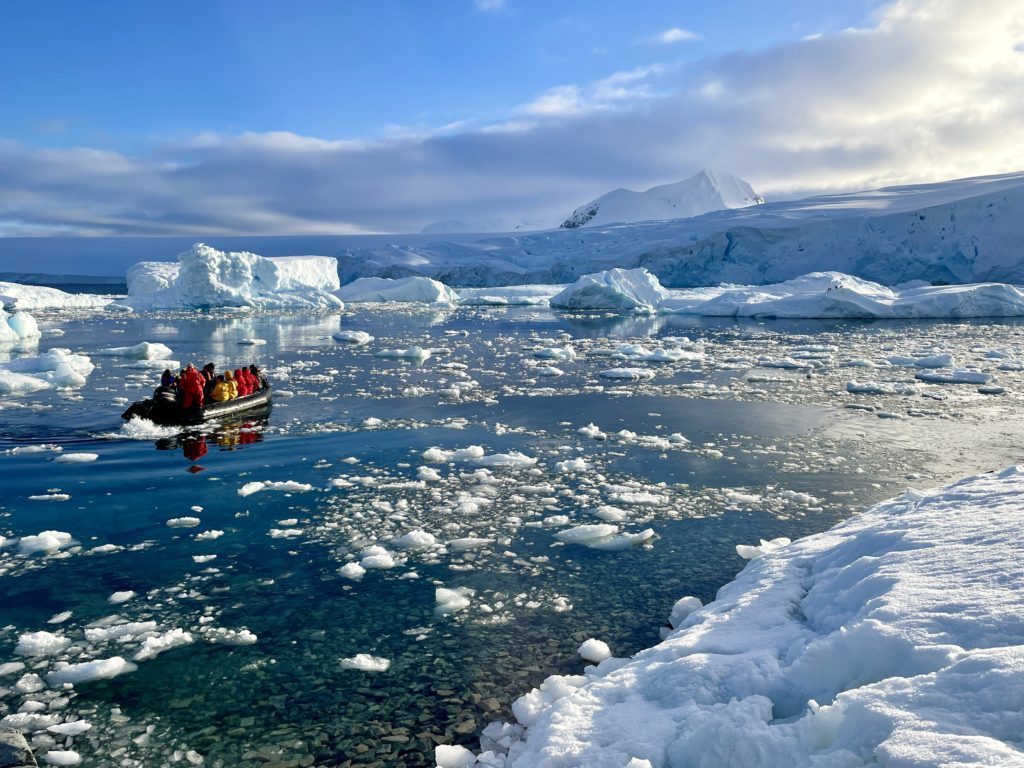

Dynamic and Dramatic
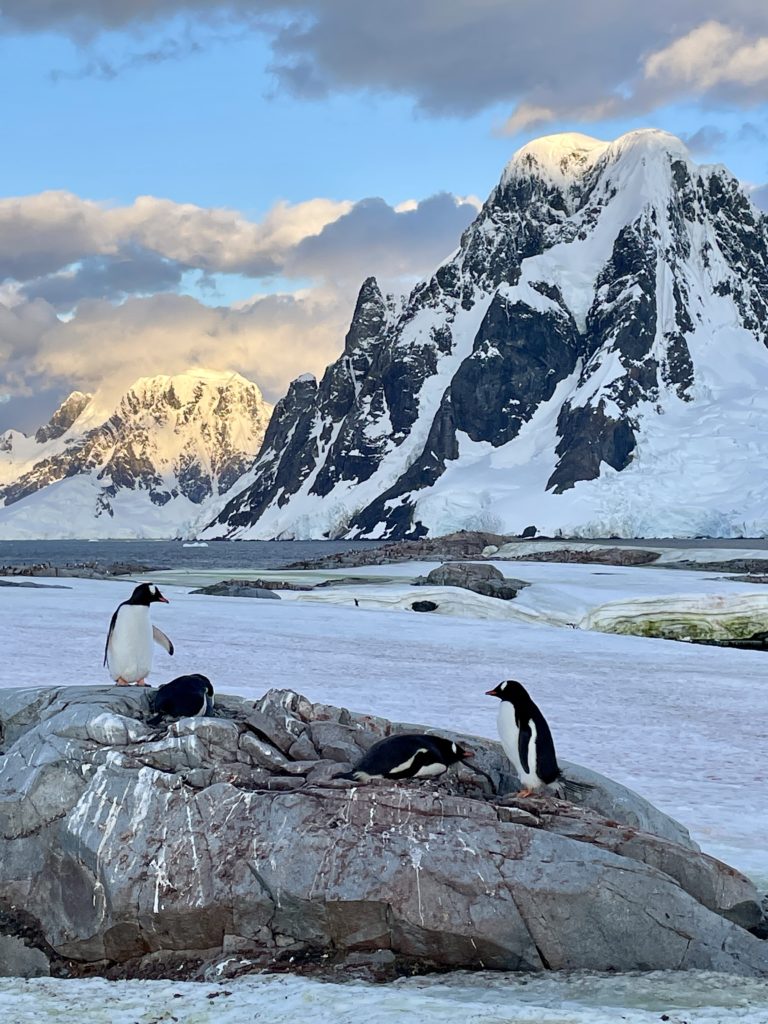









Lonely, Desolate, Unchartered




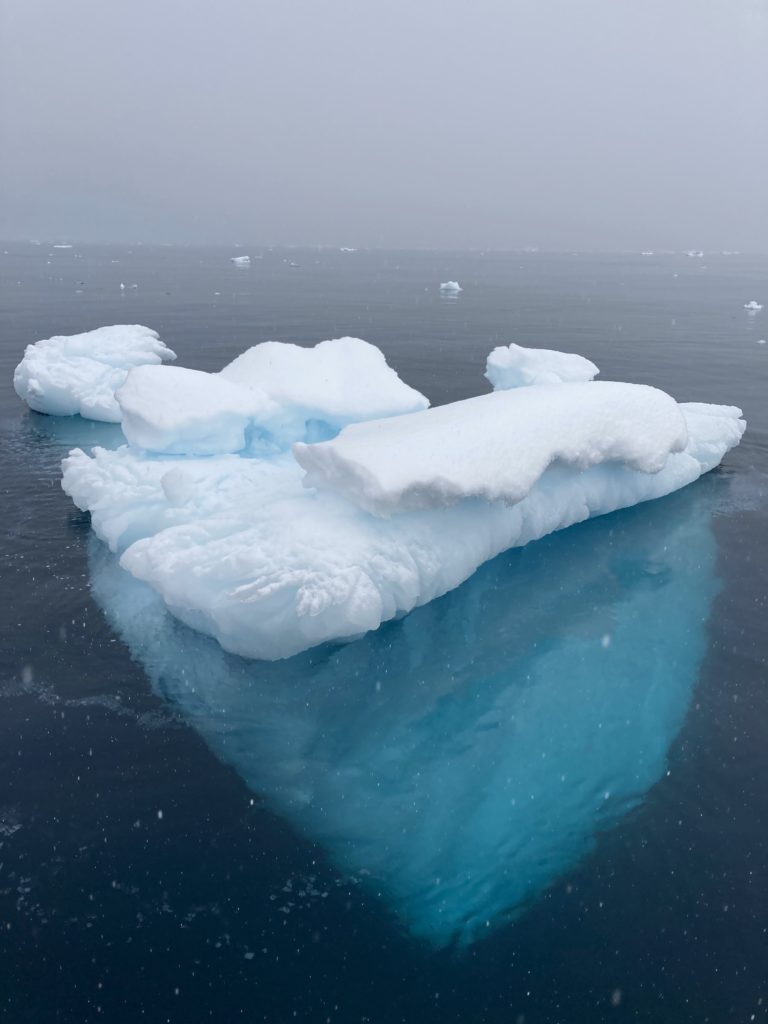





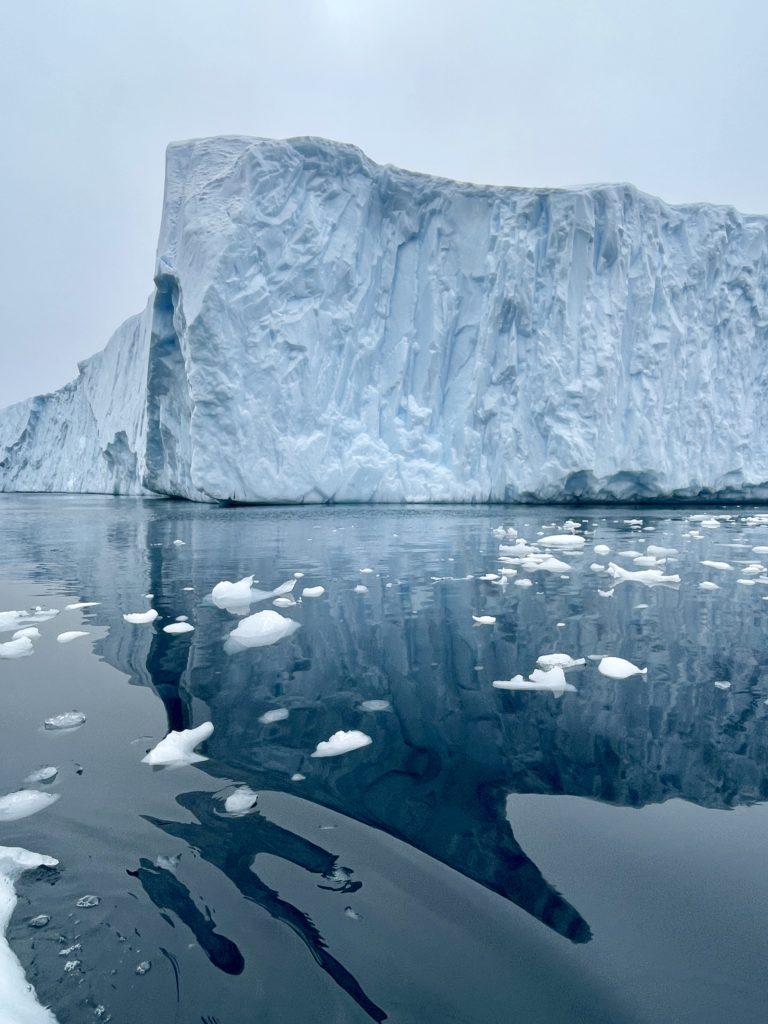

Breathtaking, Stunning










Magical




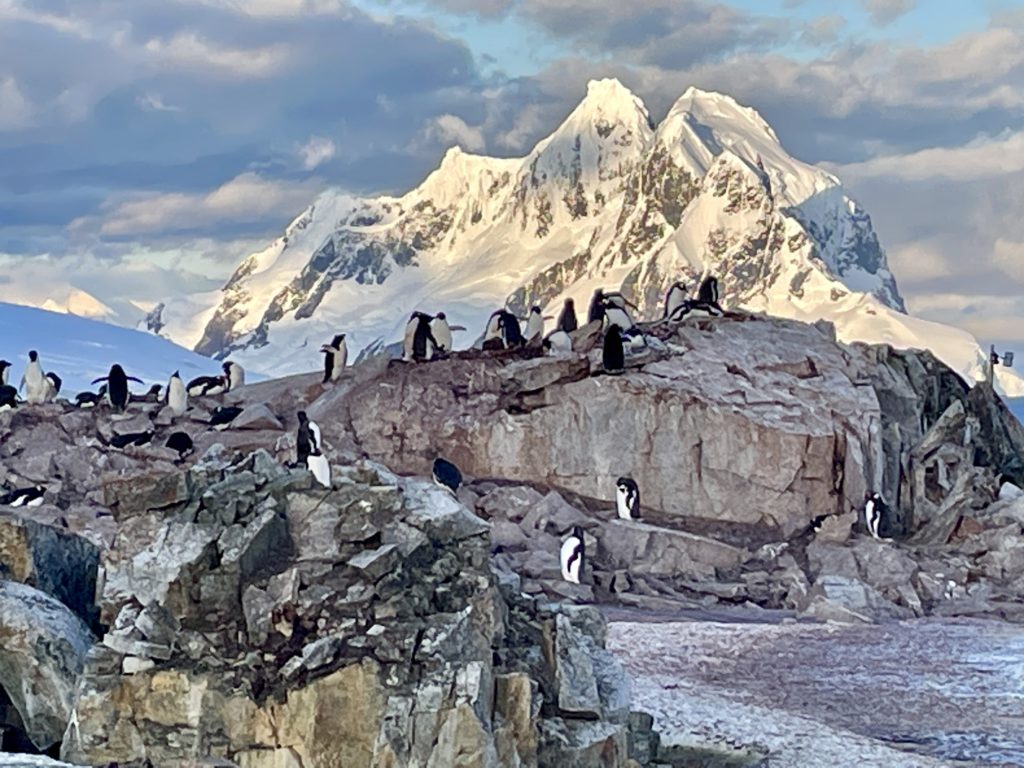





Unspoiled, Pristine




Wild, Exotic, Surreal






A Land of Contrasts; Tranquil, Serene and Peaceful …




yet Brutal …


…Where the Penguins always provide the Comic Relief.






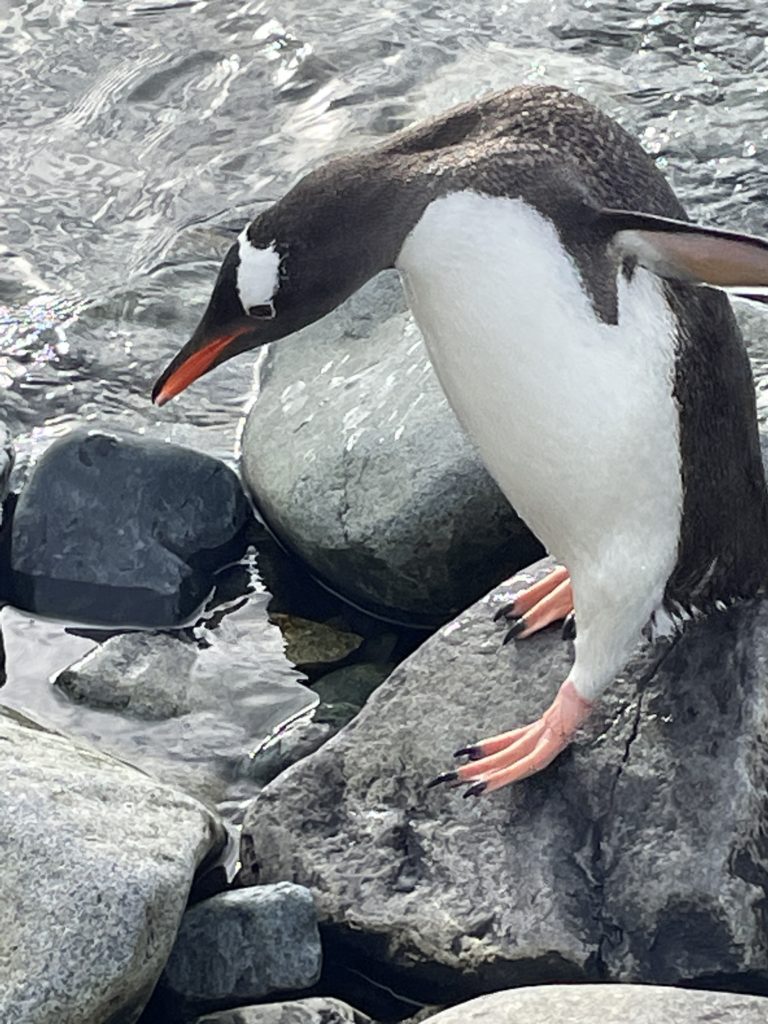





Chinstrap and Gentoo Penguins were delightful to watch as they went waddling and hopping about their day, sometimes face-planting in the snow and sliding down a slope on their belly. Throughout it all they were fishing, adding stones to their nests, taking care of chicks and being curious about us, too.
Unworldly and Otherworldly






This is pancake ice and the Captain was constantly monitoring how it would gather and move around our ship. He was in constant contact with our guides and zodiac drivers to announce when we needed to return to the ship immediately due to the changes in the ice conditions. This happened more than once on our trip.
Untamed, Untamable; here, Mother Nature will always win.




A place created Without Man’s Influence.








A place where we are so Insignificant, it makes me wonder What’s my Place in the Universe?






It seems like Antarctica is the Crown Jewel of the Earth. It’s the first time I felt like I was looking at Earth through God’s Eyes.




Antarctica is incredible.
More of Antarctica’s Story


The early history of Antarctica is really a story of adventure and endurance. The “Whalers” (mostly from Norway) arrived in 1902 and were essentially the first explorers and mapmakers who named many of the geographic features around the coasts of Antarctica. Each summer, whales come by the thousands from all the different oceans to lazily hang out at the surface and feed in these cold nutrient-rich waters. They were an easy target. Once killed, the crew would blow the whale up with air and stick a flag of their country in it, letting it float away. Then, they would go kill more. After several days, the whaling ship would sail around, collecting all of their whales and tow them back, ten at a time, to their processing stations on South Georgia or Deception Islands. There, the cutters would slice the whales into chunks, and cook down the blubber to harvest the oil. This oil was essential as fuel to light oil lamps all over the world.


In 1922, there was such a decrease of Humpback Whales, they were declared illegal to hunt. Unfortunately, the Blue Whale, the largest of them all, did not have the same fate and it was almost hunted to extinction. By the 1940’s, there was a noticeable decrease in the entire whale population including Minke, Southern Right, SEI, and Fin Whales, and as new technologies arrived and petroleum came into being, there was no need for whale oil anymore. The last of the whaling efforts ended in 1950. For the fifty years of its existence, it is estimated that 25-30,000 whales were killed each summer in Antarctica.


While the whalers were exploiting the resources of the sea, polar explorers were fighting to be the first to conquer the interior. The famous race between Norwegian’s Roald Amundsen and Britain’s Robert Scott to reach the South Pole only happened in 1911 (just over 100 years ago!) Amundsen had previously spent time with the Inuit and knew how to dress and travel by dogsled. Scott tried the military way and brought horses for his expedition. It didn’t end well for the horses, or for Scott. Then, Ernest Shackleton tried to cross the continent in 1914, and his story of survival is the stuff of legends.


For decades, other explorers followed with interest in making scientific discoveries, collecting data on species and mapping the continent. Of course political super powers wanted the land for its mineral and fisheries resources. Remarkably, however, in 1957, the biggest players came together and decided that Antarctica needed to be shared; a place dedicated to scientific research with complete cooperation between countries. They signed a treaty in 1959 and went as far as to agree that it would be illegal to extract mineral resources in Antarctica, and that the continent would always be nuclear free. There were twelve original signatures to this treaty including Argentina, Chile, New Zealand, Australia, Norway, United Kingdom, France, Belgium, Russia, Japan, South Africa and the United States.
Today, there are 55 total country members, with various voting rights to approve new agreements as new issues arise. They vote on topics such as the use of renewable energies, or the location for a new research base with plans for environmentally protective architecture. According to the rules, in order to keep their membership active, all participating countries have to continuously operate a research base on the continent. Therefore, annual residence number around 1,000 scientists, while many more come to Antarctica just for the summer season.


The success of this treaty cannot be understated. It has enabled the peaceful cooperation between many different countries (who were on opposite sides during the Cold War) for the sake of furthering scientific research and protecting this vital place on Earth. Their next big issue will be agreeing on how to minimize the effects of climate change they are already seeing on the continent.


Tourism
In order to keep in the good graces of the treaty signatures, and sustain a future of tourism on Antarctica, tour operators have tried to organize and self-regulate themselves. In 1991, seven tour companies formed the International Association of Tour Operators and agreed to follow strict regulations limiting the group size on a landing and the frequency of cruise ships in any given area at one time. Today, there are over 100 tour company members carrying almost 200,00 visitors to Antarctica each summer. Unfortunately, there is no regulatory agency curtailing the total number of cruise ships going to Antarctica each year, and not all tourist companies are rule-following members of this organization.


I, ofcourse, loving to explore, have always wanted to see Antarctica. But, I also have a very strong environmental conscience, and I had convinced myself that I shouldn’t go to this fragile continent. Then, wandering the streets with the other parka-wearing Antarctica tourists and seeing the huge cruise ships leaving the dock every day, I waffled. I bought the ticket.
I tried to follow all the rules and give wildlife lots of space, but really, I will never know how much impact I caused by having this Antarctic experience. I’m sure it’s the animals around the Shetland Islands and the Antarctic Peninsula that suffer the most because that is where the majority of tourists go.
That said, Antarctica is so big. The parts of this continent where humans have ever walked is so minimal to its vastness. I think the impending threats to Antarctica are so much bigger… like the warming of the Earth. For example, scientists are already seeing that the krill, the small crustacean that forms the basis of the Antarctic food chain, are moving south into colder and colder waters, which is having an effect on the seabirds, penguins, seals, and whales. Furthermore, an environmental disaster like an oil spill from all the ships taking passengers or supplies to this remote wilderness would destroy this land of ice.


At the end of our cruise, we each received a certificate for crossing the Antarctic Circle. During the ceremony, it was impressed upon us that we are now the voice, the ambassadors, for this remote and wild continent. It is up to us to minimize our footprint on the Earth in order to protect this essential wilderness for the future. The animals, and the ice, depend upon it.
I feel so fortunate to have had this Antarctic experience. Thank you to all who made it extra special!
























Scott
Wow! Now that’s an adventure, and quite a well-researched blog post.
You might have to trade Antarctica stories with Jim L. from MTPC if you ever get back to the neighborhood. If I remember correctly, he was stationed at McMurdo back in the day 50 years ago or so.
Tom Pinit
Simply spectacular! What an adventure.
Nancy Kilcullen
Such an amazing journey to Antarctica Becky!! Love this!
Retha Els
Wow, Becky – thank you for writing this! It is an authentic and beautiful expression of our journey, beautifully written with a context of bringing so much of what we have learnt into the narrative. I love it. May your future journey guide you to experience everything you need, desire and love and bring you back safely to the delightful person you are and whom we adore.
Susie Platt
Becky this was wonderful!! I actually read it aloud to Brian as he drove, we felt like we were there with you! After seeing the pictures, we truly wish we would have been there. Now, I must admit it did put Stockton to sleep (but he is only 13 months after all 😉) Safe travels and can’t wait to read more! 🥰
Sara Tanner
Sooooo incredible!! We were in Ushuaia with the fam just before Covid…truly a magical place. Your descriptions make me feel almost like I took that extra leg of the adventure with you. ❤️ Travel on & keep sharing with us!
Michelle Lane
Thank you for sharing this adventure and , of course, the beautiful pictures. It is really incredible. You’re incredible.
Kevin McConnell
Nicely done, Becky. You truly captured the beauty of our adventure in the Southern Ocean. All the best to you as your adventure continues.
Gayle Warberg
I’d love to believe it was divine intervention that caused your mattress accident and prompted your phenomenal journey to Antarctica! Stunning pictures and documenting your experience!